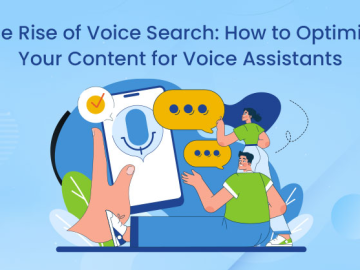Each time the calendar turns over, the ad industry dusts off its arguments for what could finally make this year “the year of mobile.”
As someone who’s worked in mobile marketing for more than 15 years, I’ve yet to see the channel truly have its moment. But the push for more privacy-compliant ad targeting, combined with recent advancements in the use of on-device signals like location and biometric data, could mean the industry is finally primed to unlock mobile’s true value.
But, while on-device data is inherently more privacy-safe because it doesn’t need to be shared with third parties for ad targeting, that doesn’t mean it’s a silver bullet. If mobile is going to capitalize on the opportunity before it, marketers must use on-device data signals responsibly and clearly communicate their use to consumers.
On-device sensors
What makes smartphones so smart? Dozens of sensors.
The GPS sensor determines location while the accelerometer, gyroscope and magnetometer analyze motion, orientation and direction. Fingerprint and face-recognition sensors facilitate recognition and authentication, and the proximity sensor indicates how close the phone is to a face. Near Field Communication (NFC) empowers contactless communications like mobile payments. And other sensors can measure temperature, humidity, atmospheric pressure and even a user’s heart rate.
These sensors provide specific action and location data that enable user targeting. And, to ensure privacy compliance, the sensor data can be used for targeting without ever leaving the user’s phone.
Technology from companies like Intent HQ can facilitate targeting based on the activities monitored by the phone’s sensors. For example, one marketer working with Intent HQ scheduled campaigns based on an AI engine called “Best Moment to Engage.” By analyzing on-device data signals (such as screen time, whether the person was at home at the time, etc.), the brand reached consumers at moments of high receptivity, nearly doubling the conversion rate.
Location-data optimization
Real-time location data is arguably a mobile device’s most valuable targeting and attribution signal. But it’s also arguably the most prone to privacy abuse.
Companies like PlaceIQ integrate location data from mobile devices with other data sources, including purchase data, behavioral patterns, etc. This combination of data sources enables targeting relevant users on their shopping journey, resulting in campaigns that reduce ad waste while increasing lift and other performance metrics.
Subscribe
AdExchanger Daily
Get our editors’ roundup delivered to your inbox every weekday.
Beyond enabling a marketer to improve campaign performance, mobile-based foot traffic data also facilitates the optimization of retailer traffic by analyzing customer journeys in the neighborhood and within the store.
But, given the sensitivity of location data, data sets must be large enough to ensure individual users can never be identified.
Personal insights from a personal device
Today, most users buy, chat, play and engage with online content primarily via their smartphones. Beyond relatively general targeting parameters like age and location, it’s possible to learn a lot about users based on the apps they use and the frequency with which they use them.
By analyzing app usage and using machine learning technologies, marketers today can understand what content users consume and infer the types of products and services that would interest them.
Most consumers are willing to share data with marketers as long as they’re transparent about how the data is being used to improve the consumer experience. According to Axway, 60% of users globally believe in allowing marketers to access their personal data if it results in a better user experience.
If an online game or app is using in-app data to serve ads for games or apps that have similar user profiles, its privacy policy should include language that makes this clear: “To generate revenue to support our development team, we’re running ads for other games/apps with similar user profiles. We also believe that many of you will be interested in these games/apps.”
Given the personal nature of on-device mobile data, transparency is critical. Marketers need to be transparent about what data they’re using and how it will benefit their users. These disclosures need to be done in plain language instead of legalese.
But transparency will only go so far in preventing potential pitfalls. Advertisers should probably avoid any health-related data or anything related to religion and sexual orientation. And they should also avoid collecting any data from users under 18.
Limitations aside, on-device mobile data can help marketers overcome signal loss from platform changes and privacy legislation. But it will require real transparency from the industry to win user trust. And a few examples of marketers or platforms abusing user trust could end this opportunity for all.
“Data-Driven Thinking” is written by members of the media community and contains fresh ideas on the digital revolution in media.
Follow Tappa and AdExchanger on LinkedIn.
For more articles featuring Leo Giel, click here.





